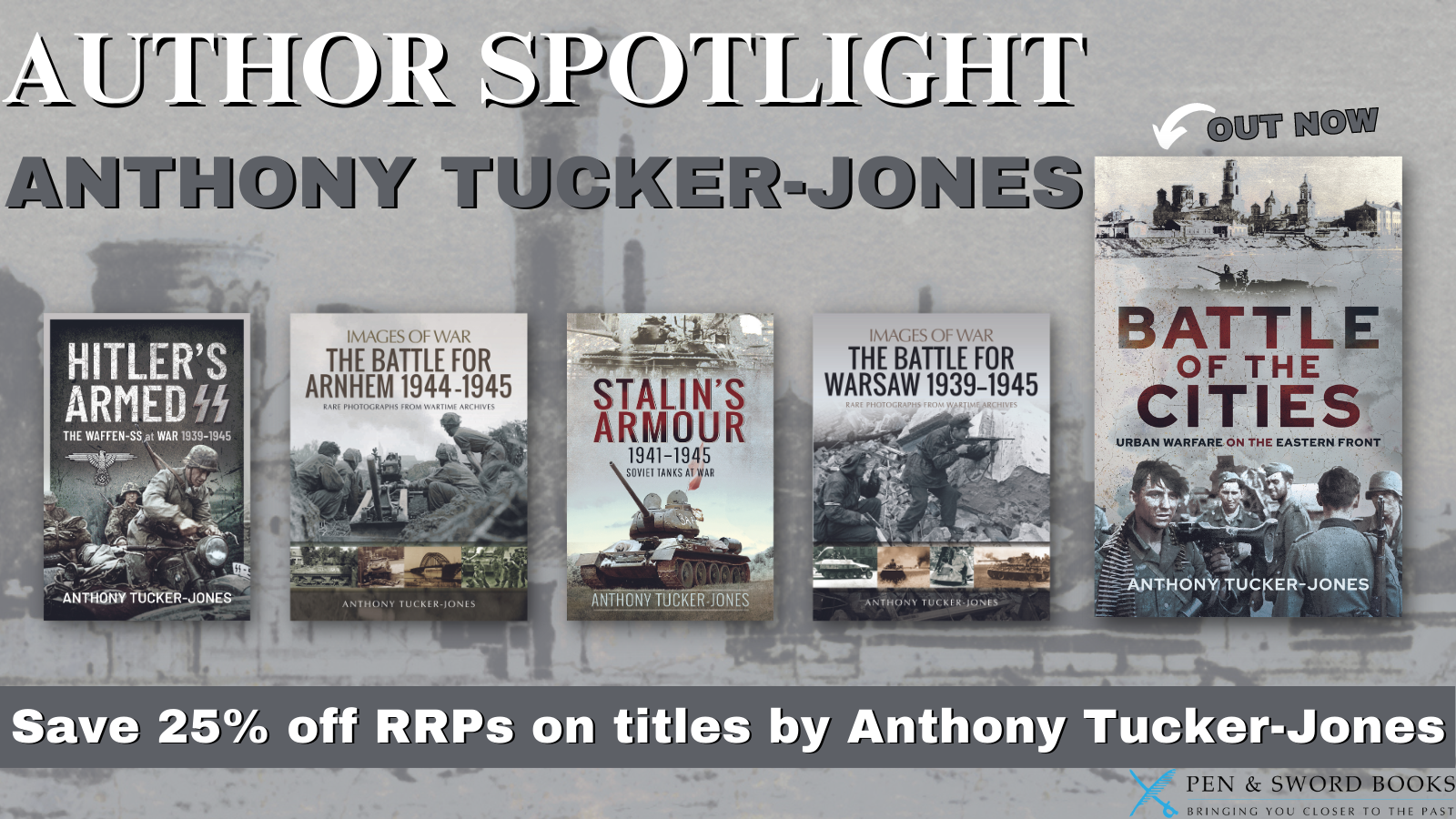Author Spotlight: Anthony Tucker-Jones
Unveiling the Battle of the Cities
My latest book Battle of the Cities: Urban Warfare on the Eastern Front 1941-1945 from Pen & Sword covers the fierce fighting for eighteen key cities across the Soviet Union, Poland, Hungary, Austria and Czechoslovakia, though two feature twice for obvious reasons. Few people realise how much cities actually shaped Adolf Hitler’s strategy when he invaded the Soviet Union. His obsession with taking them forced him to fatally dissipate his forces, which ultimately led his defeat. By way of a taster here are five aspects of the Battle of the Cities people might be unaware of.
Five Things You Didn’t Know:
1. The Second World War in Europe did not end with the fall of Berlin
The end of the Second World War in Europe was a decidedly messy affair because it did not happen overnight. It did not occur with Hitler’s suicide on 30 April or the surrender of the Berlin garrison on 2 May 1945. Although the Allies’ Victory in Europe was officially recognised six days later with Germany’s official capitulation, the Battle for Prague continued until 11 May and pockets of resistance in Austria and Czechoslovakia held out for another eight days. This was because Army Group Centre trapped to the east of Prague had to mount an operation to rescue German personnel from the city and conduct a fighting retreat in the face of the Red Army.
2. Hitler Never Came Close to Taking Moscow
Although some of Hitler’s troops reached the very outskirts of Moscow in the winter of 1941, he never really stood a chance of taking the Soviet capital. This was the fault of the Japanese and the harsh Russian winter. Japan after losing a brief border war with the Soviet Union in 1939 avoided renewing hostilities against the Soviets when Hitler attacked two years later. This enabled Stalin to redeploy many of his Siberian divisions from the Soviet Far East to Moscow. There they took part in Zhukov’s winter counteroffensive, which drove the frost bitten Germans away from the city. Hitler then became distracted by Leningrad, Stalingrad and Grozny and never did take Moscow.
3. Hitler’s Eastern Front Strategy Ensured he could not take Stalingrad
Foolishly in the summer of 1942 Hitler divided his offensive power on the Eastern Front by undertaking two separate thrusts; one was towards Stalingrad on the Volga and the other way to the south towards Grozny in the Transcaucasus. This meant that German forces were not strong enough to take either city, and in both cases were driven back. In particular Stalin used Stalingrad as bait to pin down the Germans before launching a decisive counteroffensive against Hitler’s weaker Axis allies. The German 6th Army became trapped at Stalingrad and forced to surrender. Hitler’s relief column was too late and simply not strong enough to cut their way through to them.

4. Not All German ‘Fortress’ Cities were captured by the Red Army
While Budapest, Konigsberg, Vienna and Berlin were all overrun, Breslau the capital of Silesia defiantly held out until the very end of the war. Around 50,000 troops and 200,000 civilians were trapped inside the city; about 600,000 civilians, many of them refugees, were expelled out into the winter to die by the brutal Nazi gauleiter. After beating off every Soviet attack the garrison finally surrendered on 6 May four days after the fall of Berlin.
5. Although Konigsberg was forced to surrender on 9 April 1945 its spirited defence enabled a remarkable maritime evacuation along the Baltic coast
All the time that Konigsberg, the Prussian capital, held out it screened a mass naval evacuation of the German Baltic coast from the ports of Danzig, Gdynia, Memel and Pillau. Operation Hannibal shipped over a million civilians and soldiers to safety in western Germany and German occupied Denmark. Konigsberg’s neighbouring port at Pillau continued to resist until 25 April 1945. Some German troops also escaped to the Frische Nehrung, which became the very last German stronghold in East Prussia. It held out until the very end of the war.
All this and much more is covered in Battle of the Cities.
Shop Anthony Tucker-Jones titles here.


